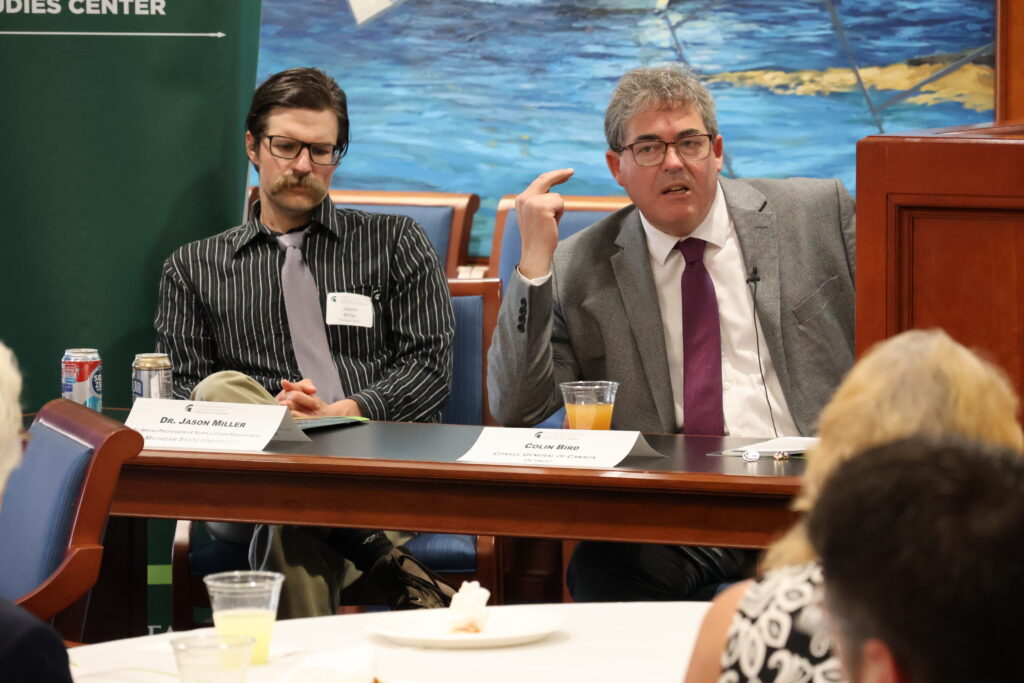Experts Examine Michigan–Canada Economic Ties Amid Tariff Turbulence
At a time when the world is facing heightened global economic uncertainty, attendees at the 2025 Mackinac Policy Conference have analyzed in depth the still strong but very tense economic relationship between Michigan and Canada, showing the intertwining of and the dependences on both sides of the border and the impact of the tariffs on those relations.
Mayor Drew Dilkens of Windsor, however, sees things differently and is positive that discussions between former President Trump and Canadian Prime Minister Mark Carney about giving a second chance to their earlier trade agreement can be the spark to a new relationship for both nations. According to Dilkens and his team, the infrastructure for the new cooperation exists—it’s all clear from the missing part, the agreement.
A Border Built on Shared Industry
One of the key questions of Michigan–Ontario corridor’s is that the guests like Bird had during the period of the discussion. For example, the U.S. and Canada during the Second World War were “the arsenal of democracy” also producing the famous jeeps, tanks, and airplanes. They gave the world a great example of how to grow and set up the production of aluminum and steel. This essentially became an interlocking network of raw materials, heavy industry, and common market across the two nations.
That historical interaction between the countries is really significant. For instance, the tariff on Canadian imports by the United States would have a heavy impact on Michigan plants, which rely on Canada for 60% of their aluminum.
“You are in the bull’s-eye,” Bird stated emphatically. “The tariff wall will not only tax foreign goods through the region because we share many natural resources but it will also be a harsh move to the ecosystem we have built in the region for such a long time, we have even used them to propel the economy.”
It’s not just some abstract concept, but a matter for board members and factory workers. Companies are indeed shying away from them, an economist Miller pointed out. They are not sure about the future of the tariffs and, consequently, they are quitting investments, postponing new hires, and playing the role of a vigilant observer.
“At the moment, firms are not expanding only because of the doubt they have in their minds not because they are not on the right track of their operations right now,” Miller elaborated. “They are waiting, they are not growing. They need evidence.”
Miller referred to a survey of the Federal Reserve Bank of Atlanta, where in 45% of the interviewed businesses, investment reductions were anticipated and only 4% looking forward to the expansion of the business. What will this lead to? We’ll have a huge number of fewer items to choose in the market than we used to as businesses will be producing only the best-selling goods.
However, Miller went on to emphasize that the U.S. economy is not on the edge of recession. “Let’s be clear: we’re not there yet,” he said. “But the next six months will be telling.”
Reshoring: Easier Said Than Done
Although some argue that these tariffs will bring manufacturing back to the U.S., industry experts Bird and Dilkens cautioned that the problem of reshoring is not as easy as it seems. For example, General Motors is preparing to shift production from Mexico to the U.S. although the process is scheduled for 2027, meaning that it is a quite rapid response.
Miller claimed that the relocation of the operations to the existing factories would take one year and a half at least. On the other hand, the construction of entirely new ones could take as long as four years. Besides, if we take into account the shortage of labor, the challenges might arise even quicker.
Dilkens mentioned two fallacies. First, that companies are possessing large sums of money and just looking for investment opportunities in a new U.S.-based plant, and second, that there are enough workers in the workforce to fill these vacancies. With a U.S. unemployment rate at 4.2 percentage points, the country is pretty much fully employed.
“We would like to bring manufacturing back today, but who will do the jobs for us?” Dilkens said. “Even if the decision were made to relocate the factory to the U.S. tomorrow, we would still lack manpower.”
A Hopeful Path to a Deal
Although the situation is quite difficult, the prevailing attitude is to proceed with care. Trump and Carney have given themselves 30 days to come up with a new agreement, so experts in both the U.S. and Canada are still of the view that a deal can be worked out.
The U.S. Ambassador to Canada, Pete Hoekstra, held the same view as the conference. And despite his recognizing Trump’s implementation of charges for all foreign countries in the current trade policy, he still stated that there is arguably no reason why U.S.-Canada trade cannot be the freest and most unrestricted in the world.
For Bird and Dilkens, tariffs between two countries with an economics of that level of integration cannot be justified. In Bird’s view, the U.S. is already implementing the U.S.-Mexico-Canada Agreement (USMCA) to its fullest potential, and the results are already noticeable: existing supply chains are being brought back to North America, resulting in wage growth in the manufacturing and automotive sectors.
“The tools are there,” Bird said. “There is a political will to keep the structure stable, eliminate the problems, and fight together against trade practices that are truly unfair and come from outside of North America.”
Conclusion: The Stalemate of Recovery
Rihanna Aisha Day states, “At the end of the day, what the representatives of the business community of Michigan and Canada are saying is that we are at a dead point.” Here the emphasis is not only about the loss of financial assets, but also the loss of the dynamics. The decision to be taken by these regions in restoration and the measurement of the level of success will be done by transparent regulations, respect for each other, and a full economic understanding of the impacts intertwined.







